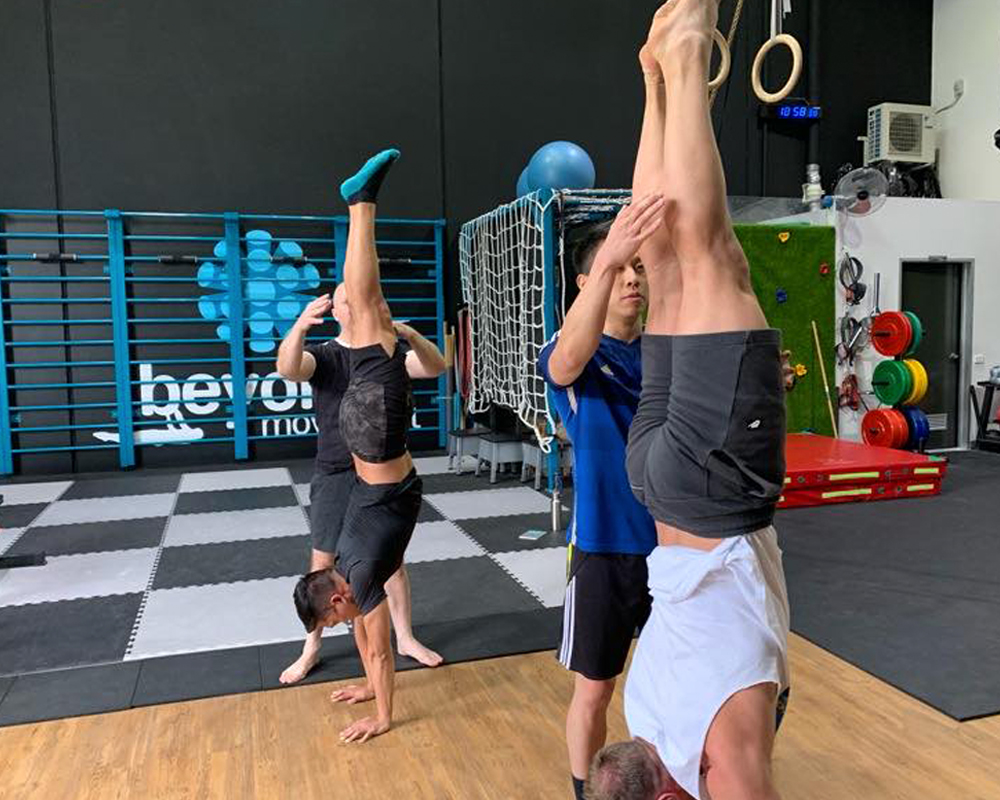
Press to Handstand
Elegantly lift into a handstand without jumping. This skill combines exceptional strength with flexibility and control.
Focus Areas
Prerequisites

Press to Handstand
Elegantly lift into a handstand without jumping. This skill combines exceptional strength with flexibility and control.
Prerequisites
The press to handstand represents the intersection of strength, flexibility, and control—the ability to lift into a handstand from standing without any jumping or momentum. This skill transforms the handstand from a static hold into a dynamic expression of movement, requiring exceptional hip flexibility, core compression strength, and the precise coordination of multiple muscle groups working in harmony.
At Beyond Movement, we approach press training as a long-term project that develops alongside handstand and flexibility work. The progression typically begins with straddle presses (easier due to reduced leverage) before advancing to pike presses. Each variation demands not only strength but also the active flexibility to compress the body while maintaining control. The skill serves as a benchmark for integrated training success.
The press to handstand offers unique benefits beyond its aesthetic appeal. The combination of compression strength and controlled movement develops body awareness and proprioception unavailable through isolated exercises. Yogis find it enhances their arm balance practice dramatically, while the strength developed transfers to numerous other movements requiring core compression and control.
Prerequisites
Master these skills first:
- Consistent 30+ second handstand
- Chest-to-floor pancake flexibility
- 30+ second L-sit hold
- Active compression strength
- Understanding of weight shift mechanics
Common Mistakes
Avoid these errors:
-
Insufficient lean forward
Instead: Master weight shift before attempting
-
Relying on momentum
Instead: Build strength for slow, controlled movement
-
Neglecting flexibility
Instead: Dedicate equal time to compression work
-
Poor hand position
Instead: Find optimal placement for balance
-
Rushing the lift phase
Instead: Develop patience with slow progress
Related Skills
Foundation
Freestanding Handstand
Master the art of balancing on your hands without wall support. This foundational inversion builds incredible shoulder strength, core stability, and full-body awareness.
Foundation
L-Sit
Build exceptional core strength with this fundamental hold. The L-sit develops compression strength essential for advanced gymnastics movements.
Progression
One-Arm Handstand
The pinnacle of hand balancing—supporting your entire body on a single hand. This skill represents years of dedicated practice and refinement.
